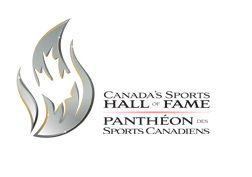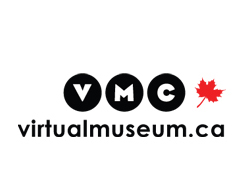Home | Major Sporting Events | British Empire Games/Commonwealth Games
Mini Documentary British Empire Games/Commonwealth Games
Video Transcript
[Images from the 1930, 1978 and 1994 Games]
The history of Canada’s involvement with the Commonwealth Games reflects the power of a shared values uniting a dynamic and ever-evolving international community of former British Colonies.
[Narrator – KYLE SHEWFELT]
Often referred to as ‘The Friendly Games’, the origins of this world-class multi-sport event can be traced back to 1891, when an imperialist named John Astley Cooper first proposed a “Pan-Britannic Contest” to celebrate unity through athletic achievement across the British Empire.
[Footage from 1928 Olympic Games parade of athletes]
[Images of Melville Robinson and British Empire Games trophy]
Cooper’s grand idea was not fully realized until after the 1928 Olympic Games in Amsterdam, when Melville Marks “Bobby” Robinson, a Hamilton sports reporter and manager of Canada’s Olympic Track and Field Team, became concerned that the prestige of winning had begun to eclipse a sincere appreciation for sportsmanship in international competition.
[ Historica Footage of First World War]
A veteran who had experienced the savagery of the First World War, Robinson aspired to promote peace, fellowship and understanding through friendly competition.
[Images from 1930 British Empire Games - Canadians at opening ceremony, track and field events]
He rallied hesitant international organizers with remarkable determination, and staged the first British Empire Games in Hamilton, Ontario in 1930. Despite difficult weather that had alternated between excessive heat and pouring rain, crowds in Hamilton remained numerous and enthusiastic. Their support for the inaugural British Empire Games was described as “an expression of belief in a way of life and a code of behaviour” celebrating the common ground created by sportsmanship and fair play.
[Images from 1954 British Empire and Commonwealth Games - opening ceremony, Prince Philip shaking hands with dignitaries and walking with other military personnel.]
After 1930 the British Empire Games would be held every four years in different Commonwealth countries, with the exception of the Second World War. Canada’s second opportunity to host the event, rechristened the British Empire and Commonwealth Games came in 1954. As the Cold War forged bitter ideological rivalries and amplified tension in international sport, the 1954 British Empire and Commonwealth Games offered an alternative vision that fostered peace, diplomacy and community through athletic competition.
[Images of 1954 medal - back and front]
Victory medals in Vancouver featured a royal crown surrounded by the links of a chain symbolizing unity, strength and the bonds of friendship through uniting Commonwealth Nations.
Perhaps the most inspiring Canadian story occurred when the heavily favoured British rowing team were upset in the 2,000-metre race by an unlikely crew from the University of British Columbia known as the Canadian Eight.
[Images of 1954 rowing team racing]
The relatively inexperienced Canadian rowers had been mentored by Frank Read, an incredibly demanding coach who believed in building character as well as skill. Striving for their best personal performances, Read’s team captured Canada’s first-ever gold medal for rowing at a Commonwealth meeting.
[Image of 1978 Commonwealth Games – bird’s eye view opening ceremony]
In 1978 the eleventh Commonwealth Games were held in Edmonton, Alberta. For the first time the event was simply known as the Commonwealth Games, placing much greater emphasis on the independence and cultural diversity of modern member nations. In the wake of National Centennial Celebrations in 1967 Canada had become much more confident in celebrating its unique multicultural society.
[Images of 1978 Commonwealth Games uniform and mascot, Queen’s baton and Diane Jones Konihowski competing]
Emphasizing diversity, organizers of Edmonton’s Commonwealth Games also encouraged international contributions to the cultural component of the event, known as Festival 78. While Canada dominated the medal counts in 1978, the most celebrated athletes also inspired with the personal integrity of their achievements.
[Footage of Graham and Sawchuck with announcer describing the race - Graham looks good while Sawchuk will just finish the 100m freestyle.]
While Edmonton-born swimmer Graham Smith collected a record-setting six gold medals, he was not simply motivated by a desire to win. Smith’s victories were “narrow… hard-won” and fuelled by a determination to excel in front of a hometown audience.
[Footage of Graham and Sawchuck with announcer describing the race - Graham Smith 4:27 point 34.]
[Footage of Graham Smith on podium holding a cowboy hat and bear while singing the Canadian National Anthem, crowd cheering.]
Powerful personal emotions also inspired Smith, who had competed in an Edmonton pool named after his father, a revered swimming coach who had recently passed away.
[Images of 1994 Commonwealth Games – opening ceremony, killer whale mascot in rescue helicopter with pilot, youth wearing traditional Aboriginal costumes ]
Over 2,500 athletes representing 63 nations competed in the Fifteenth Commonwealth Games, held in Victoria, British Columbia in 1994. Under the motto “Catch the Spirit”, organizers in Victoria aspired to stage a more inclusive event that extended more competitive opportunities to disabled athletes.
[Image of Michael Edgson]
Michael Edgson, Canada’s most decorated Para-athlete, organized the field of play for swimming events in Victoria.
[Images of para athletes – swimming, wheelchair racing, swimming backstroke, track and field, lawn bowling, wheel chair basketball, pairs table tennis, cycling, diving, gymnastics, shooting, synchro swimming, and weight lifting]
His contributions heralded a new appreciation for how disabled athletes could enrich the traditional emphasis the Commonwealth Games had placed upon on the sportsmanship and individual achievement. In 1994, disabled athletes also competed in six exhibition events in swimming, athletics and lawn bowling. Although they did not contribute to medal counts, their achievements lay a foundation for the full integration of Para-sport into the Commonwealth Games, which would follow in 2002 in Manchester.
Drawing on M.M. Robinson’s pioneering vision; the Commonwealth Games hosted by Canadians consistently inspired stunning athletic performances in a congenial atmosphere that had been described as a family reunion. More importantly, the international excitement that accompanied the “Friendly Games” also reflected and inspired change within Canada, challenging organizers, athletes and spectators alike to reimagine the role of sport in nourishing community and fulfilling human potential.
[Image of Kyle Shewfelt competing in gymnastics]
Previous Next


